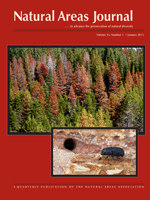Isle Royale National Park (IRNP) is an archipelago in west central Lake Superior. In 2010, the National Park Service Great Lakes Inventory and Monitoring Network initiated a long-term monitoring program at IRNP with the goals being to: (1) determine the current forest structure, (2) assess how succession and climate change will impact species assemblages, and (3) develop realistic management targets related to climate change impacts on IRNP forests. Five forest types were identified, with three of these (sugar maple (Acer saccharum Marsh.)/birch, eastern white cedar (Thuja occidentalis L), and balsam fir (Abies balsamea (L.) Mill.)) being climax types with little likelihood of succeeding into any other type over the next two to three decades. Two forest types (white spruce (Picea glauca (Moench) Voss),/trembling aspen (Populus tremuloides Michx.), and paper birch (Betula papyrifera Marsh.)) were in a state of transition. The long-term (> 50 year) successional pathways of all five forest types will be influenced by climate change, species' migration abilities, and disease. Many dominant species currently on the island, including balsam fir, black spruce (Picea mariana (Mill.) Britton, Sterns & Poggenb.), and white spruce, are expected to become extirpated, while the abundance of other common species, including paper birch and trembling aspen, is expected to decline. The 21 km distance between the mainland and the islands will prohibit timely immigration of new species onto the island in the face of climate change. Immigration will likely be led by avian-dispersed species (Prunus spp., exotic Lonicera spp., and Rhamnus cathartica, another exotic species) with dispersal of other taxa relying on stochastic events or human transport. Managers should consider assisted migration to ensure that species assemblages remain congruent; otherwise, stable ecosystems dominated by a few non-native taxa may result. This is especially relevant on the eastern side of the island where balsam fir forests dominate in shallow, bedrock-derived soils.
How to translate text using browser tools
1 January 2013
The Forests of Isle Royale National Park: Can We Preserve This Pristine Wilderness in the Face of Climate Change?
Suzanne Sanders,
Jessica Grochowski
ACCESS THE FULL ARTICLE

Natural Areas Journal
Vol. 33 • No. 1
January 2013
Vol. 33 • No. 1
January 2013
boreal forest
climate change
Isle Royale National Park
long-term monitoring
northern hardwood forest




